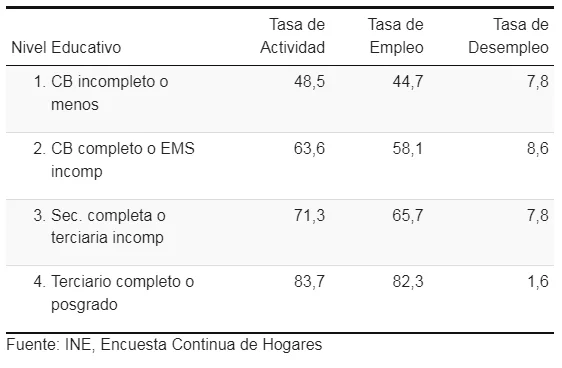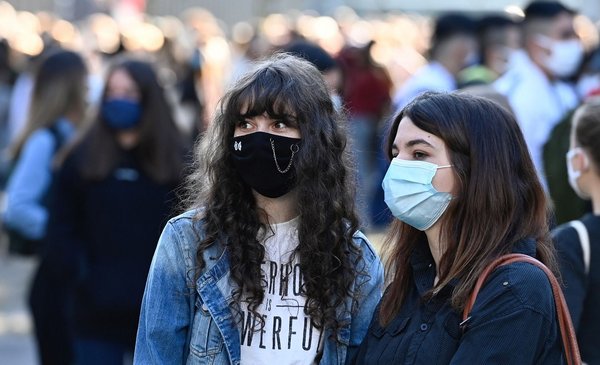This Tuesday the National Institute of Statistics (INE) presented its Labor Market Differential Report, which deepens in the employment data of the Continuous Household Survey (ECH). In the official publication they were revealed significant differences between groups based on sex, ethnic-racial descent, age group and educational level.
Among the starkest contrasts, youth unemployment was 23.1%, when the general rate was 7%. The youngest people, in the range of 14 to 24 years, had an activity rate of 41.4% and an employment rate of 31.8%. This may signal difficulties in entering the labor market for the first time.
A central feature is that unemployment declines as age increases and reached 2.6% for those 65 and older. The highest activity and employment rates are among those between 30 and 44 years old.
Too the differences were very large according to educational level of the participants. The INE separated four categories: Basic Cycle (BC) incomplete or less, complete CB or incomplete secondary, complete secondary or incomplete tertiary and, finally, complete tertiary or postgraduate studies. While in the first three groups unemployment was between 7.8% and 8.6%, in the last it was barely 1.6%.
The activity and employment rates did not reach 50% among those with a lower educational level, while both exceeded 80% for those who had completed tertiary or postgraduate studies.

By sex, the rates of activity and employment were almost 15 percentage points higher in men than in women and male unemployment was 5.8% compared to 8.5% for female.
On the other hand, although underemployment numbers were also more favorable to men (7.9% vs. 10.6% of women), labor informality occurred on the contrary (The figure for women was 20.7% and for men 22.8%).

Lastly, the racial ethnic ancestry he played a role like the other characterizations. In particular, one of the most striking differences appeared in that unemployment among those who perceived themselves as “white” was 6.5% when those who identified as “Afro” or “black” and of other ancestry had figures of 9 .7% and 9.8% respectively.

Informality and underemployment also had significant disparities according to ancestry. Among the black population, non-registration reached 28.7% and underemployment reached 14.3%; for whites they were 20.8% and 8.4% each.

In the presentation of the data carried out by the INE, its director Diego Aboal described most of these gaps as “very hard and structural elements in Uruguay“.
















